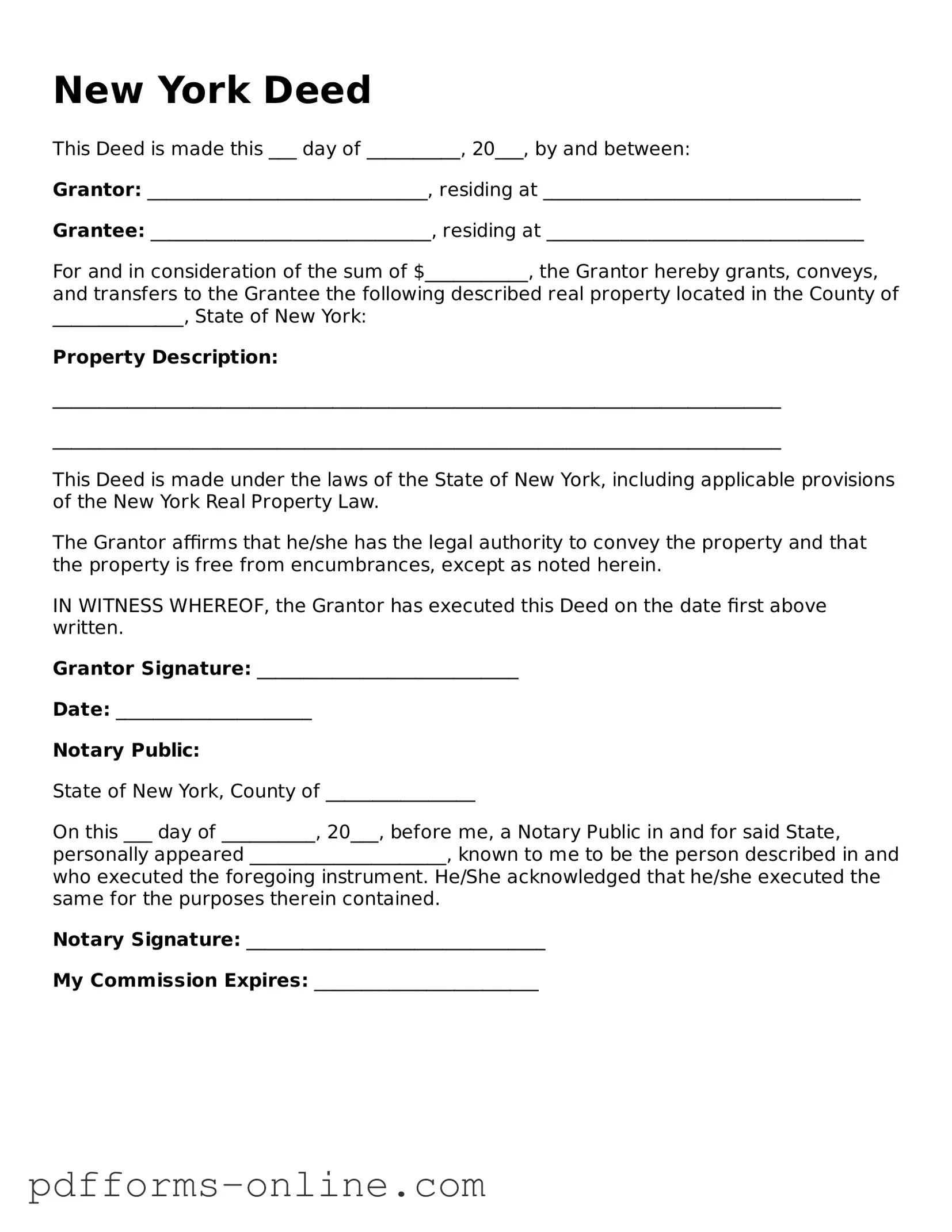New York Deed
This Deed is made this ___ day of __________, 20___, by and between:
Grantor: ______________________________, residing at __________________________________
Grantee: ______________________________, residing at __________________________________
For and in consideration of the sum of $___________, the Grantor hereby grants, conveys, and transfers to the Grantee the following described real property located in the County of ______________, State of New York:
Property Description:
______________________________________________________________________________
______________________________________________________________________________
This Deed is made under the laws of the State of New York, including applicable provisions of the New York Real Property Law.
The Grantor affirms that he/she has the legal authority to convey the property and that the property is free from encumbrances, except as noted herein.
IN WITNESS WHEREOF, the Grantor has executed this Deed on the date first above written.
Grantor Signature: ____________________________
Date: _____________________
Notary Public:
State of New York, County of ________________
On this ___ day of __________, 20___, before me, a Notary Public in and for said State, personally appeared _____________________, known to me to be the person described in and who executed the foregoing instrument. He/She acknowledged that he/she executed the same for the purposes therein contained.
Notary Signature: ________________________________
My Commission Expires: ________________________
